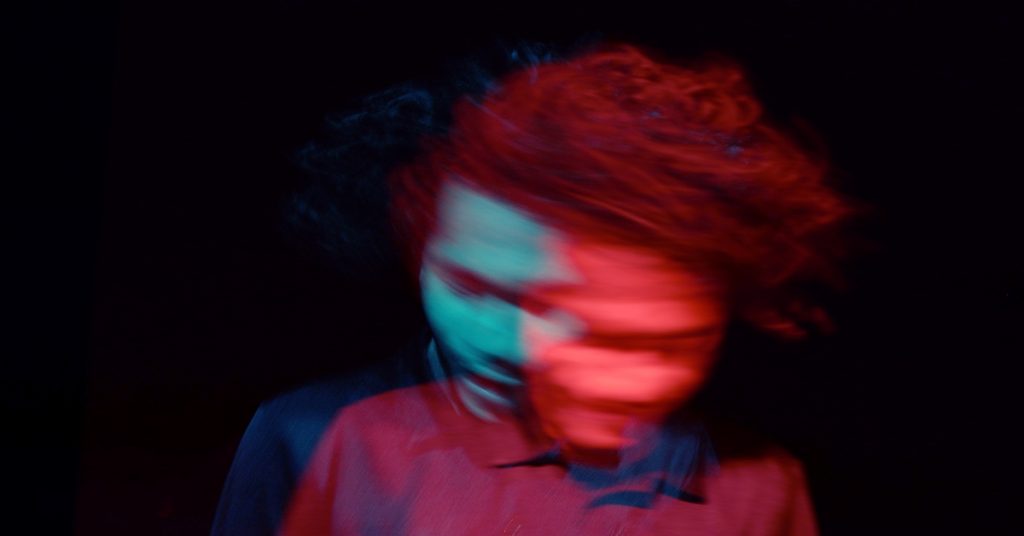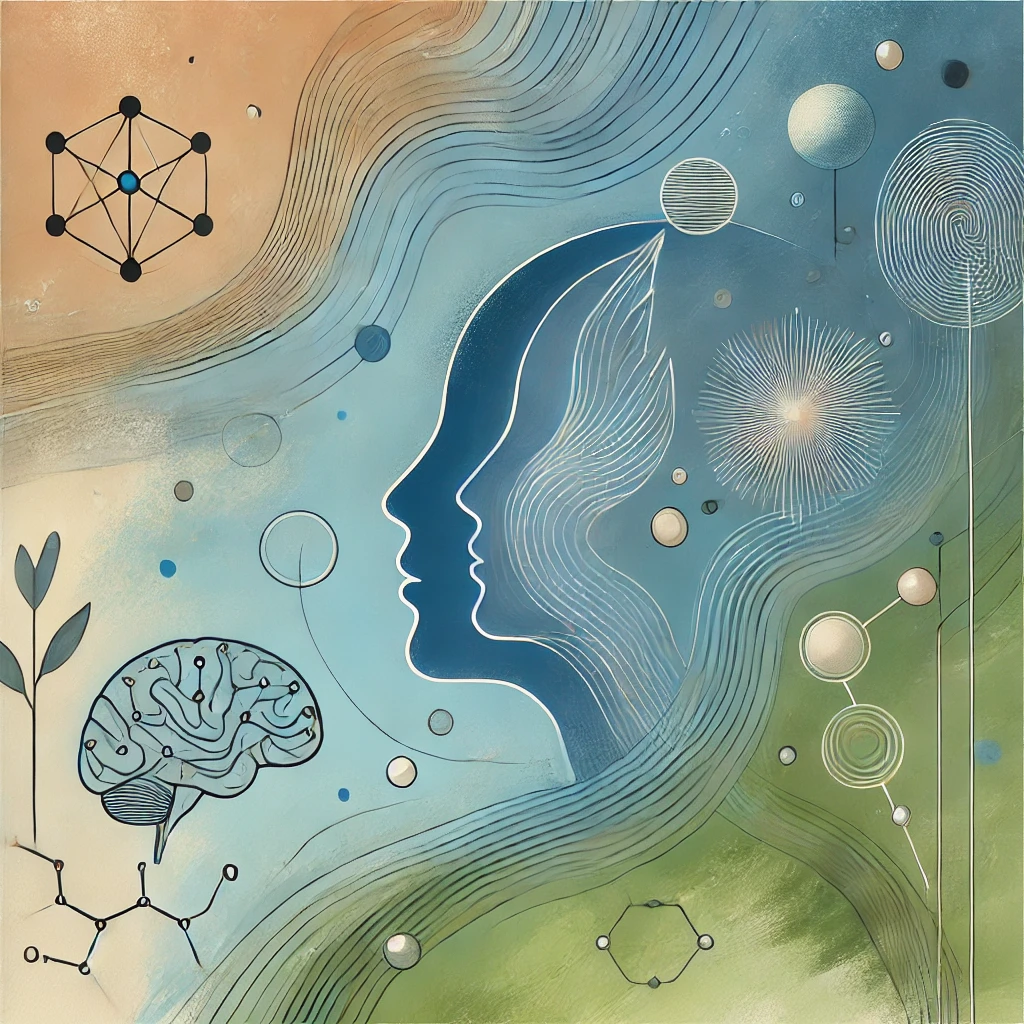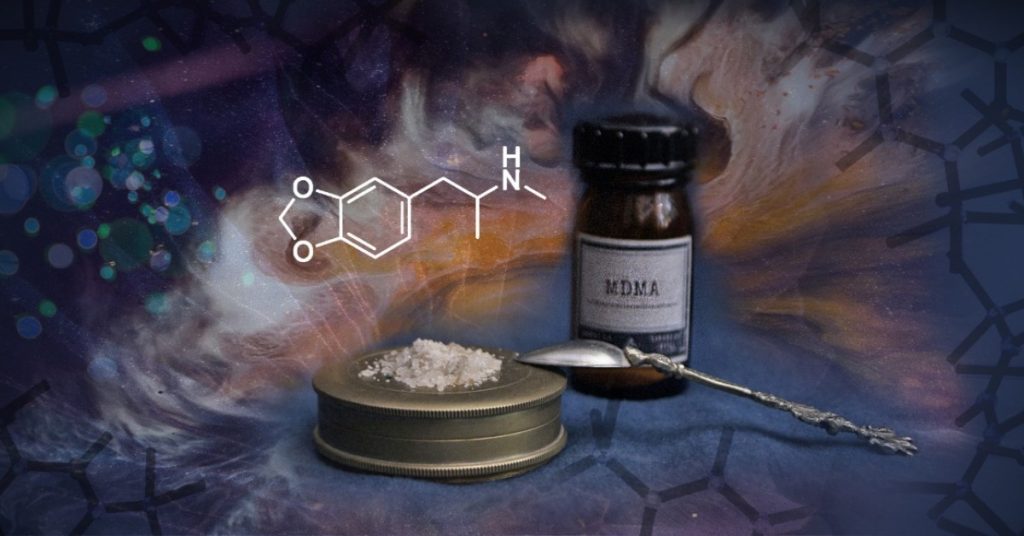Psychiater Tijmen Bostoen werkt als trauma-expert in Centrum ‘45, waar binnenkort een gerandomiseerd gecontroleerd onderzoek (of RCT) van start gaat met MDMA in de behandeling van PTSS. Daarnaast behandelt Bostoen sinds dit jaar patiënten die zowel een psychotrauma als een depressie hebben met ketamine, aan het LUMC. Daarmee is hij één van de weinige psychiaters in Nederland die zich bezig houden met psychedelica. We spraken hem over zijn ervaringen.
Waar is je interesse in psychedelica begonnen?
Dat begon voor mij op ICPR 2016. Tijdens het congres werd me duidelijk dat psychedelica-onderzoek interessant is en dat ik er meer van wilde weten. Het onderwerp intrigeerde me heel erg omdat de onderzoeksresultaten zo veelbelovend zijn. Wat me tijdens het congres opviel, was dat er echt goed opgezet onderzoek is gedaan met RCTs. Dat maakte voor mij duidelijk dat ik het onderwerp serieus moest nemen.
Ik had al wel eens iets gehoord over behandelingen met psychedelica, met name omdat Bastiaans daar in de jaren ’70 mee bezig is geweest. Soms had hij opvallende resultaten met LSD-behandelingen bij de ernstigst getraumatiseerde concentratiekamp-overlevers. [Bastiaans was hoogleraar psychiatrie en net als Tijmen verbonden aan Centrum ‘45 in Oegstgeest, red.]
Maar als je er dan induikt, dan blijkt dat er best al veel onderzoek gedaan is in de vorige eeuw en dat er veel al is uitgezocht. Met hele interessante resultaten. Niet echt volgens de wetenschappelijke standaarden van nu, maar toch. Dat was echt een eye-opener voor me.
Vier jaar later ben je één van de weinige psychiaters in Nederland die met deze middelen werken. Dat is best snel gegaan.
Ja, inderdaad. Toen Rick Doblin (de directeur van MAPS) in Nederland was voor ICPR’16, werd ik uitgenodigd voor een etentje. De directeur van Stichting OPEN en mijn collega Eric Vermetten waren daar ook bij aanwezig. Tijdens dat etentje is onze interesse gewekt om zelf een studie op te zetten naar MDMA, met ondersteuning van MAPS.
Toen een paar maanden later bleek dat de MDMA-assisted psychotherapy for PTSD studie in Amerika zó voorspoedig ging dat MAPS eerder dan gepland in Europa onderzoek wilde gaan doen, wisten Eric en ik meteen dat we daarbij wilden aanhaken.
Binnenkort gaat de pilot van start bij ons in Centrum ‘45. Dit is een opmaat naar de fase 3 klinische studie waarmee MAPS MDMA wil registreren als medicijn voor PTSS. Met die registratiestudie hopen we over een jaar te starten. De voorbereidingen zijn volop aan de gang.
Daarnaast werk je sinds begin dit jaar ook met ketamine, aan het LUMC. In welke context doe je dat?
Ik behandel patiënten die zowel een psychotrauma als een depressie hebben. We behandelen die patiënten volgens een depressieprotocol met ketamine. Dat zijn zes ketaminesessies in twee weken. Dat is een heel intense behandeling.
Het is voor ons ook een beetje pionieren, omdat we nog niet zo goed weten hoe ketamine nou bij PTSS werkt. We willen toewerken naar een gespecificeerde PTSS-behandeling met ketamine. Deze pilot is vooral bedoeld om ervaring op te doen met ketaminebehandelingen en om te kijken of dit depressieprotocol ook aanslaat bij patiënten die naast depressieve klachten ook last hebben van een psychotrauma / PTSS.
Het is heel mooi dat we hierin kunnen samenwerken met het LUMC en ervaring op kunnen doen met deze behandeling.
Hoe kan het dat je PTSS-patiënten al mag behandelen met ketamine, terwijl er nog geen klinisch onderzoek naar is gedaan?
Het is een off-label behandeling. Ketamine is een geregistreerd geneesmiddel, dat eerder al uitgebreid onderzocht werd en inmiddels al vele tientallen jaren gebruikt wordt door anesthesisten: we weten wat het doet en wat de bijwerkingen zijn. De laatste jaren wordt gekeken wat de effecten bij psychiatrische aandoeningen zijn en dan vooral bij depressie. Als je een medicijn off-label gebruikt dan komen er wel extra criteria bij. Je moet bijvoorbeeld heel goed overleggen met de patiënt en goed duidelijk maken dat je iets voorschrijft voor een aandoening waarvoor dat middel niet bedoeld is. Je moet uiterst zorgvuldig te werk gaan. Maar dan mag het wel, binnen de geneeskunde.
Hoe reageren patiënten, slaat de behandeling aan?
Ik vind het in ieder geval opvallend hoe goed en snel ketamine werkt op de depressieve symptomen. Of het ook specifiek effect heeft op alle PTSS-symptomen, dat moet ik nog zien. Ik kan me er wel iets bij voorstellen dat ketamine de gangbare traumabehandelingen beter werkzaam maakt. Maar ik weet het nog niet zeker, daar is het te vroeg voor. Ik wil er meer van zien en er op een gegeven moment ook klinisch onderzoek naar gaan doen.
Wat voor dosis geef je patiënten en krijgen ze daar een psychedelische ervaring van?
We gebruiken 0,5 mg s-ketamine per kilogram lichaamsgewicht. Of het echt geestverruimend is zoals je bij de klassieke psychedelica of MDMA ziet dat weet ik niet, maar het geeft zeker veranderde bewustzijnseffecten. Je ziet echt wel dat mensen heel fors onder invloed zijn en moeite hebben de intense ervaring onder woorden te brengen. Maar vaak kost het deze getraumatiseerde mensen moeite zich over te geven aan de ervaring.
Zijn die psychedelische effecten onderdeel van het werkingsmechanisme, of eerder een bijwerking?
Sommige onderzoekers zien het inderdaad eerder als een bijwerking. Zoals ketamine nu vooral wordt toegepast, is als een biologische behandeling. Dus: je geeft een geneesmiddel dat processen in het brein op gang brengt, wat maakt dat er minder klachten zijn. Maar wat ik vaak zie: als de ketamine aan het uitwerken is, gaan mensen toch reflecteren op de ketamine-ervaring zelf, en vaak hebben zij daarin elementen van hun traumageschiedenis beleefd. En mijn indruk is dat dat wel belangrijk is, in ieder geval bij PTSS.
MDMA behaalt indrukwekkende resultaten in de MAPS-studies – er is zelfs een breakthrough therapy status aan gegeven door de FDA. Wat maakt ketamine dan nog interessant voor jou als behandelaar en onderzoeker?
Ketamine wordt vooral bij depressie ingezet en zorgt ook bij heel hardnekkige vormen van depressie voor opvallende resultaten. Dat is echt heel bijzonder. MDMA is eigenlijk nog niet bij depressie ingezet maar vooral bij PTSS. Dus dat is een beetje appels met peren vergelijken in die zin.
Ik wil heel graag weten of de ketamine-behandeling langduriger werkt voor depressie als je de setting verandert en meer gaat werken vanuit het kader waarin MDMA wordt gegeven. Want dat is bij ketamine het geval: het verlicht de symptomen heel goed, maar dat effect is na een aantal weken vaak weer uitwerkt. Misschien dat je dat wel kan veranderen als je veel meer doet aan de set en setting en de psychotherapeutische follow-up. Momenteel is er beperkt onderzoek naar de effecten van ketamine op PTSS. Daar ben ik heel benieuwd naar: heeft ketamine vergelijkbare resultaten bij PTSS zoals we bij depressie zien? En wat voegt een specifieke set en setting toe? Als we wat beter zicht hebben op wat bij PTSS zou kunnen werken, dan willen we dat verder onderzoeken in een goed onderzoeksontwerp.
Waarin verschillen de kaders waarin met MDMA en ketamine wordt gewerkt het meest?
De MDMA wordt op een hele andere manier gegeven: in drie sessies van acht uur met twee therapeuten. De ruimte zelf wordt mooi aangekleed, zodat mensen niet het gevoel hebben dat ze in een ziekenhuis liggen. Er wordt veel psychotherapie gegeven voor en na elke sessie. Dat is echt een totaal andere manier van werken dan wat nu met ketamine gebeurt.
Ik denk dat het best zou kunnen dat ketamine net als andere psychedelica werkt en dat de ervaring zelf heilzaam kan zijn. Dat dit nog niet zo uit de verf is gekomen, ligt misschien toch aan de dosering die gebruikt wordt en aan de setting. Nu krijgen patiënten de ketamine echt in een ziekenhuissetting: ze liggen aan een infuus in een ziekenhuiskamer. Als je het vergelijkt met de MDMA-behandelingen voor PTSS, dan is er erg weinig tijd voor voorbereiding op en integratie van de andere bewustzijnsstaat. Ik denk dat als je ketamine op dezelfde manier zou inzetten als psilocybine of MDMA, dat het best zou kunnen dat je ongeveer dezelfde veelbelovende effecten ziet: een grote en blijvende afname in symptomen. Maar dat moet nog blijken.
Waarin verschilt het effect van ketamine met dat van MDMA, zoals je dat in patiënten waarneemt?
Met ketamine zijn mensen veel minder in staat om hun gedachten te ordenen en in gesprek te gaan. Dat maakt ketamine echt anders dan MDMA. De effecten treden ook veel sneller op en werken veel sneller weer uit. Bij MDMA zie je het effect langzaam opkomen en patiënten zijn juist heel goed in staat om hun gevoelens te beleven, te duiden en erover te vertellen – vaak beter dan in de normale bewustzijnsstaat. Bij MDMA gebeurt dat al tijdens de sessie zelf.
Ben je ooit bang geweest dat de stap naar psychedelisch onderzoek negatieve consequenties zou hebben voor je carrière?
Dat valt wel mee. De meeste collega’s en peers zijn echt geïnteresseerd. Mensen stellen soms wel gezond kritische vragen en dat is logisch. Maar ik heb niet het idee dat het een soort taboe is of dat het meteen van tafel geveegd wordt ofzo.
Toen ik zag dat er echt methodologisch goede studies zijn gedaan, heeft dat mij over de streep getrokken. Maar ik blijf ook kritisch. Ik ben redelijk onder de indruk van de psychedelica. Maar een wetenschappelijke houding, goed meten van de effecten en mogelijkheden goed in kaart brengen is voor mij de enige manier om goed met dit onderwerp om te gaan.
Welke uitdagingen kom je tegen als psychedelica-onderzoeker?
Het is heel lastig om aan te geven wat psychedelica nou precies doen. Dat onderzoek is ingewikkeld. We weten wel veel, maar wat nou precies de werkende elementen zijn… dat is nog steeds lastig te zeggen. Psychedelica doen veel op het niveau van neurotransmitters en hormonen en met fMRI kan je processen in het brein in kaart brengen die door psychedelica beïnvloed worden. Maar psychedelica geven ook hele krachtige subjectieve effecten. En het lijkt soms wel of dat twee parallelle werelden zijn. Want dat van die subjectieve effecten, dat zou meer passen binnen een psychotherapeutisch kader: je werkrelatie verdiept, er is meer ruimte voor reflectie en voor catharsis. Dat is heel psychotherapeutisch beschreven. Maar tegelijkertijd hebben psychedelica ook echt een heel krachtige biologische werking… en dan zit je weer in dat straatje van hoe we met medicijnen omgaan. Je licht iemand voor, je geeft een bepaalde dosis van een middel en vervolgens laat je dat middel als het ware zelf z’n werk doen.
Zoals dus nu bij ketamine gebeurt.
In het geval van ketamine zie je die parallelle werelden heel duidelijk. Het wordt heel biologisch benaderd door een aantal mensen. Er zijn ook mensen die zeggen dat je het juist psychotherapeutisch moet kaderen. Vervolgens moet je het ook hebben over wat nou de werkzame elementen zijn: of je bijvoorbeeld optimaal moet doseren op basis van een bepaalde bloedspiegel die bepaalde neurotransmitters in gang zet. Of dat je juist een subjectieve psychologische staat beoogt waarin je kan werken. Wie weet zijn die twee werelden ook wel nauw met elkaar verbonden… dat zijn echt dingen die uitgezocht moeten worden.
Dan heb je ook nog verschillende aandoeningen. We hadden het net al over PTSS en depressie. Daar is zeker overlap, maar het zijn wel echt andere stoornissen. En er zijn ook ideeën over de toepasbaarheid van psychedelica bij andere aandoeningen. Denk aan OCD, verslaving, persoonlijkheidsstoornissen… Er is zich echt een heel nieuw onderzoeksveld aan het openen. Heel interessant. Ik ben echt heel benieuwd waar we over tien jaar staan.
Om aan het MAPS MDMA-onderzoek mee te mogen werken, moest je eerst een speciale training ondergaan. Welke extra vaardigheden heb je daar geleerd?
Er werd sterk gehamerd op een hele open therapeutische houding, waarin je vooral het proces ondersteunt waar iemand zelf, onder invloed van MDMA, inkomt. Je doet zeker interventies, maar die zijn allemaal in dienst van het proces waar de patiënt in komt. Je werkt samen met de patiënt met wat er dan ook maar naar boven komt tijdens de sessie. In de gangbare traumatherapie ben je juist heel vaak erg sturend, in de zin van dat echt over de trauma’s zelf moet gaan en over de gevoelens die daar omheen hangen. Dat is echt een heel andere houding.
Pas je die open therapeutische houding ook toe als je patiënten met ketamine behandelt?
Ketaminebehandelingen zijn veel korter dan MDMA-sessies, waardoor ik dan toch geneigd ben om iets meer te sturen. En van wat ik tot nu toe bij ketamine zie, hebben mensen meer hulp nodig om te begrijpen wat er op dat moment gebeurt. Bij MDMA hebben mensen vaak een heel goed overzicht, maar bij ketamine zijn mensen meer los van wat ze normaal kennen. De ketamine-ervaring is meer vervreemdend, in die zin. Mensen hebben dan toch iets meer structuur van buiten nodig om daar mee om te gaan.
Als onderdeel van de MAPS-training tot MDMA-therapeut, onderging je zelf ook een MDMA-sessie – in een zelfde soort setting als je toekomstige patiënten.
Ja. Ik denk dat het echt van meerwaarde is dat als je met psychedelica werkt, je zelf ook weet wat die middelen met je doen. Want die veranderde bewustzijnsstaat is zo enorm uitgesproken, dat het wel heel moeilijk voor te stellen is hoe dat voor iemand is, als je het niet zelf hebt meegemaakt. Als iemand wil begeleiden in zo’n bewustzijnsstaat helpt het echt dat je een idee hebt wat iemand op dat moment doormaakt.
Voordat ik meedeed aan de MAPS-training had ik er eerlijk gezegd wel m’n twijfels bij. Ik dacht dat ik wel ongeveer zou weten hoe de ervaring met MDMA zou zijn. Maar nu ik het eenmaal zelf heb meegemaakt en de intensiteit en de diepgang van zo’n proces heb ervaren denk ik: dit is echt met niets te vergelijken. En dat is niet alleen mijn ervaring. Ik heb het ook aan anderen gevraagd die in dezelfde context een eigen ervaring opdeden met MDMA en bijna iedereen vindt het zelf ondergaan van een MDMA-sessie een meerwaarde.
Dus je pleit ervoor dat alle behandelaren die met deze middelen (gaan) werken in ieder geval een keer zelf ervaren wat het inhoudt?
ls het in het kader is van een psychedelics-assisted psychotherapy, dan wel. Als je met een patiënt in gesprek wil over zijn ervaringen, en zeker als je dit gesprek voert terwijl de patiënt onder invloed is, dan vind ik zéker dat eigen ervaring met deze middelen er toe doet. Als je psychedelica voorschrijft vanuit een meer biologisch kader (zoals bij ketamine) dan weet ik niet of het echt zoveel meerwaarde heeft.






